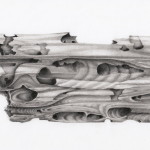
![]() Originally, Popeye the Sailor gained strength from rubbing the head of a rare chicken. Not until 1932 and thereafter did Popeye gain superhuman strength and invincibility from downing a can of spinach. Besides being easier to carry than a chicken, spinach was purported to have extremely high levels of iron that would make any sailor strong. [Unfortunately, the original 1870 study by Dr. E von Wolf finding these extreme iron levels in spinach contained a fatal misprint. Although this error was discovered in 1937, not until 1981 did Hamblin in the British Medical Journal publicized the 10x lower iron concentration of spinach. Update: Please note that this paper positing this information is hoax]
Originally, Popeye the Sailor gained strength from rubbing the head of a rare chicken. Not until 1932 and thereafter did Popeye gain superhuman strength and invincibility from downing a can of spinach. Besides being easier to carry than a chicken, spinach was purported to have extremely high levels of iron that would make any sailor strong. [Unfortunately, the original 1870 study by Dr. E von Wolf finding these extreme iron levels in spinach contained a fatal misprint. Although this error was discovered in 1937, not until 1981 did Hamblin in the British Medical Journal publicized the 10x lower iron concentration of spinach. Update: Please note that this paper positing this information is hoax]
Although spinach may not be the iron warehouse originally purported and arguably does not taste as good as chicken does fried, spinach does have a tell tale chemical signature. In nature, 1.1% of all carbon isotopes are the stable Carbon-13. Plants and phytoplankton take up 13C differentially; 13C serve as sort of a chemical thumbprint. Terrestrial plants possess higher values that phytoplankton which in turn are higher than seagrass. An organism that feeds on plants, phytoplankton, or seagrass would possess the characteristic 13C value.
Rattails or macrourids are the fishy pigeons of the deep. One species is thought to reach 37 billion individuals globally. What maintains these fish? Not old men in the park with day old bagels. From 13C values, we know rattails are likely dependent on the major food source in the deep that sinks from the ocean surface, detritus beginning as phytoplankton. Through an analysis of fatty acids of the tissue of rattails, we can infer they probably do not eat the sinking material themselves but secondarily by feeding on crustaceans that do.
Ahh, but what about spinach, you ask? Recent work by Jeffreys and colleagues indicates that macrouirds do indeed eat spinach. Baited traps with spinach placed on the deep-sea floor, quickly attracted fish and then spiraled into feeding frenzies (video at the BBC). But wait! You are asking yourself how often does a rattail actually encounter spinach or for that matter other leafy greens? Here in lies the genius. Spinach is just an easily obtainable surrogate for any land plant and the question is whether deep-sea fish are even equipped to detect a plant food fall. Apparently they can. This study indicates these dominating organisms of the deep can quickly utilize a variety of food sources in the deep; they are opportunistic.
Jeffreys et al. work has some major implications for carbon cycling in the ocean. In the typical scenario, phytoplankton are produced at the surface, sink to the seafloor, eaten by something, which in turn is eaten by something else. In this case crustaceans are eaten by rattails. However, another pathway exists. Plants float out to sea, sink to the bottom, and then find their way into the satisfied tummy of a rattail. As the authors conclude nicely, disruption of these natural processes by changes in ocean or land production of photosynthetic material will most certainly affect the denizens of the deep, including the fishy pigeons.
Jeffreys, R., Lavaleye, M., Bergman, M., Duineveld, G., Witbaard, R., & Linley, T. (2010). Deep-sea macrourid fishes scavenge on plant material: evidence from in situ observations Deep Sea Research Part I: Oceanographic Research Papers DOI: 10.1016/j.dsr.2010.01.007






I like this post because the popeye makes me remember my chilhood.
I’m, afraid this is all very wrong. You have fallen for a 29 year old joke that is all over the Internet. Check out the truth here: (1) there was never a decimal place error and (2)E.C. Segar chose Spinach for Popeye in line with US Govt advice on its Vitamin A content alone – never ever for iron. http://www.internetjournalofcriminology.com/Sutton_Spinach_Iron_and_Popeye_March_2010.pdf